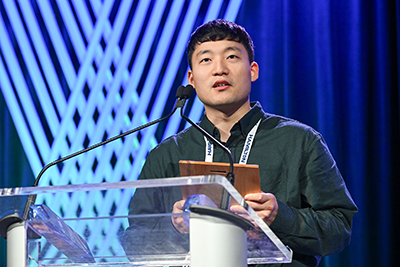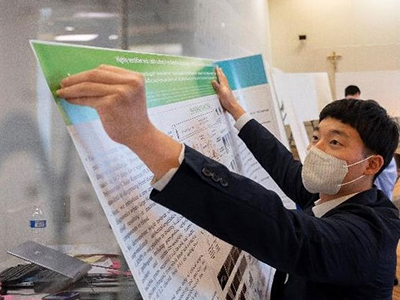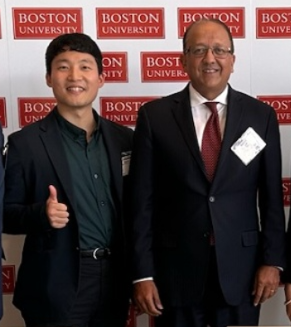
April 29, 2024
Doctoral candidate Jongwon Lim reveals a new diagnostic technique to promptly identify specific pathogens causing bloodstream infections, such as sepsis or other viral infections associated with hepatitis. Learn how his discovery has potential to reduce sample-processing times and the need for skilled technicians.

“In an era where emerging diseases and antibiotic-resistant bacteria pose serious threats to global health, accurate and timely diagnosis is essential for effective treatment and disease management,” says Jongwon Lim, M.Sc., who works in the lab of Rashid Bashir, Ph.D., dean of The Grainger College of Engineering and professor of Bioengineering at the University of Illinois at Urbana-Champaign (UIUC, Urbana, IL, USA).
As an alternative to the lengthy process of extracting and purifying pathogenic DNA from blood samples, which often results in low and inconsistent DNA recovery rates, Lim’s team developed a biphasic method that simultaneously achieves inhibitor inactivation and DNA amplification without the need for a purification step.
During the first phase, Lim’s team dries blood samples and uses the dried-blood matrix to physically trap inhibitors. Then, amplification reagents move into the solid micro/nano-porous dried blood. The team demonstrates that the biphasic method significantly improves detection limits for bacteria such as E. coli, methicillin-resistant Staphylococcus aureus (MRSA), and methicillin-sensitive Staphylococcus aureus (MSSA) using loop-mediated isothermal amplification (LAMP) and recombinase polymerase amplification (RPA).
“The absence of DNA loss mechanisms in blood drying, such as binding-unbinding procedures, allow for the full utilization of existing blood DNA, leading to highly sensitive detection of target DNA with an extremely low detection threshold,” Lim explains, adding that most clinical and resource-limited environments can benefit from the method’s accessibility with only the inclusion of a basic heater. The innovative technique recently received the SLAS Innovation Award.

“By leveraging cutting-edge technologies and innovative methodologies, we aim to revolutionize diagnostic procedures and pave the way for more effective and accessible healthcare solutions," continues Lim. He shares that the team is currently preparing a paper to show how this technology can be easily integrated into the detection of blood-borne viruses, highlighting its potential applications in clinical diagnostics.
“Moving forward, our focus is on addressing key challenges to further enhance the performance and usability of our technology,” he continues. “One such challenge is understanding how enzymes and primers diffuse into the dried blood matrix, particularly how they can reach faster and further into the sample. We plan to conduct quantitative analyses to assess enzyme movement under different porosities of the dried blood, providing valuable insights for optimizing our method.”
The Essence and Foundation of Research
“I often think about what I would have done if I had known at Christmas 2014 – that 7 million people would die from a single virus in five years,” Lim comments. “Looking ahead to 2050, the threat looms larger as antibiotic resistance is projected to cause the death of 10 million individuals annually. Moreover, the specter of global warming releasing dormant pathogens from permafrost, unseen by any living creature, adds to the urgency. Livestock in polar regions are already experiencing catastrophic moments like mosquitoes for the first time in their lives, and we have limited knowledge about possible genetic variation of the diseases transmitted via those vectors. In short, we are sleepwalking into the arena of the next pandemic,” he continues.
“I hold the belief that scientists worldwide should harbor expansive ambitions and collaborate across disciplines to address global challenges,” Lim says. “My aim is to glean significant insights and aspirations from seasoned researchers, undergo personal growth and ultimately emerge as a global leader capable of guiding numerous researchers in solving major issues.”
Lim received an opportunity, through a UIUC program, to participate in the Global Young Scientists Summit (GYSS), a multi-disciplinary summit that covers topics including chemistry, physics, medicine, mathematics, computer science and engineering. Held in Singapore, GYSS provides a bigger picture of global problems facing humanity. Seeking collaboration among scientists and discussion on an international level, Lim contemplates something he discussed with 2020 Millennium Technology Prize winner Sir David Klenerman, Ph.D., at GYSS.

“I met him briefly at the conference,” Lim says. “As we discussed his experience developing next-generation sequencing, he shared that doing great research means that you are always at the forefront – and you sometimes find yourself alone. What he meant was that sometimes there's no one else to ask and nowhere else to turn to for the question that you have – you must move forward. It is the essence and foundation of research. It is the one thing I’ve always tried to keep in mind.”
When faced with challenges and the need to push through a tough situation, Lim says he also recalls words from his PI Rashid Bashir: "What is the true innovation here?"
“When I need to overcome a challenge in research, I focus on actionable steps to move forward,” says Lim. He enjoys his morning ritual of rising early, establishing daily goals as personal standards for success, and pursuing them. “I engage in reading, studying, thinking or researching with the clearest mind I can maintain. I believe that if a problem isn’t resolved today, persistence will lead to a solution tomorrow.”

